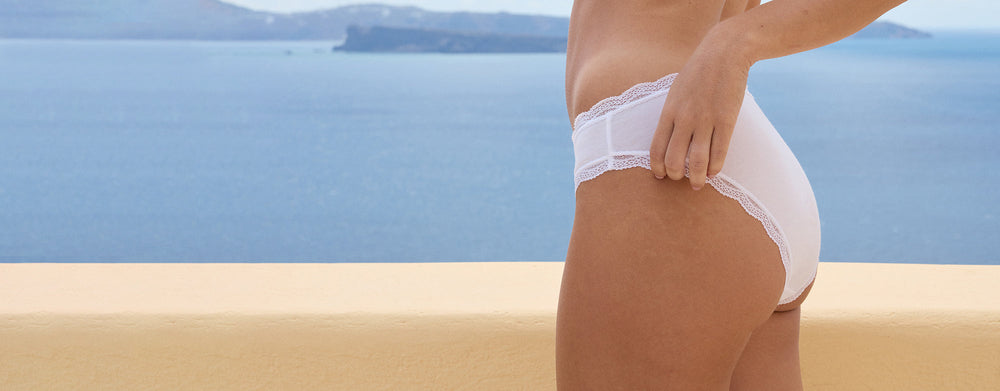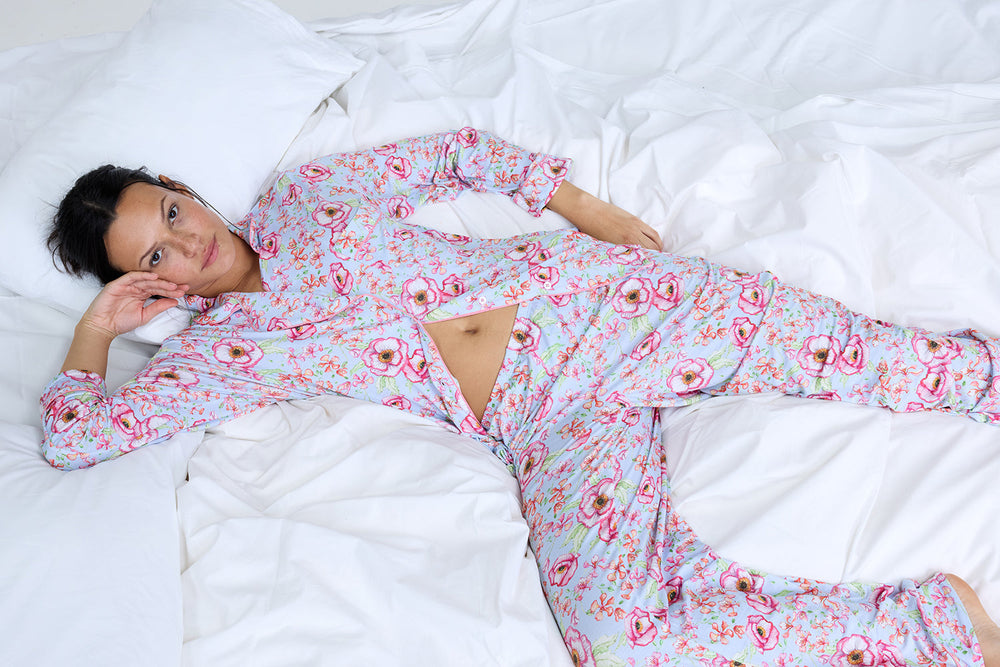We asked over 1,000 women what’s in their drawers, their favourite shape, how many pairs they own and just how old is their oldest pair of undies? We have the answers to all your burning underwear questions and most importantly, the expert advice from a gynae medical expert about how to look after your vagina for ultimate health.
What do you call yours?
Here’s just a few of the weird and wonderful names out there for underwear… Knickers. Undies. Pants. Knick Knacks. Knicker Knockers. Undercrackers. Daks. Smalls. Briefs. Unmentionables (PS - one thing we all agree on, they should never be called Panties)
How many pairs do you own?
45% of women said they own over 20 pairs of underwear followed by 27% who own 11-20 pairs. 5% of women own over 40 pairs!
What’s in there?
Half of the women we asked have underwear for specific moments in their lives. The most common being for their period, with 58% of women owning underwear for this time. The second most common answer was for date night with 49% of women having specific pairs for this whilst 32% of women have one type of underwear for every occasion.
What’s your favourite?
Over half of women say a bikini or brief shape is their favourite shape. Next in order of popularity is High Rise, Thong, Boxer or boy short then Brazilian. Women’s underwear habits have changed in our post Me Too era, Thongs have slipped to only 16% of women’s favourites - with women prioritising styles with more fabric for extra comfort over all else in their underwear drawer.
How do you organise your underwear drawer?
A whopping 65% of us chuck our knickers in the drawer any old way whilst some of us are more organised! 17% organise by shape, 14% organise by colour and 4% organise by occasion.

When is it time for a new pair?
Most of us wait until they are falling apart before buying new knickers. In fact, 50% of us! Other reasons for a new pair of knickers? A treat for yourself or spotting something you can’t live without. The average women tops up her underwear drawer twice a year and the average knicker has a lifespan of 2-5 years although there are many out there who would not reveal the age of their oldest pair of underwear (we have heard tales of 20 year old pairs floating around in drawers out there).
Hear it from the expert…
We asked Victoria Goodman MSc, an Advanced Nurse specialising in Women’s Health, for the professional view on all things gynaecological and how we can best ensure optimum health through our underwear drawers; Your vagina and vulva are incredible. Yes, yours. It’s about time we stopped hiding them under a bushel and gave them the care and attention they deserve.
Anatomy 101
We often, mistakenly, call all the female genitalia the vagina, but for those who are unsure, the vulva is the clitoris, lips and hairy bits on the outside and the vagina is the fleshy tunnel on the inside. Farage (not that one…) describes the vulva as a ‘transitional zone between the arid desert of external skin surfaces and the tropical rainforest of the vagina’. A healthy vagina is home to a variety of tiny organisms. These organisms create a delicate ecosystem and the right balance of these bacteria and fungi within your vagina play an important role in keeping it healthy. An imbalance of this microbiome can lead to conditions like thrush, bacterial vaginosis and leave you more susceptible to STIs due to the diminished level of protection your vagina has when these microbes are unhappy.
So how do I give my vagina and vulva the best self-care?
This is simple, generally just leave it alone. The vagina is pretty self-sufficient. The skin of the vulva and vagina has an optimal acidity level that everyday lotions and potions will interfere with, potentially allowing a disruption to the delicate balance of microbes that protect and care for your skin inside and out.

What should I use to wash?
Despite what that entire aisle of ‘feminine products’ in the chemist is telling you, your vagina doesn’t need washing at all - it’s like a self-cleaning oven. Your normal production of discharge will keep the vaginal microbiome happy and healthy. And please, don’t douche! Your vagina doesn’t take kindly to waterboarding. Your vulva doesn’t need a vigorous wash either, water is just fine. If you really have to use soap, find one that is as natural as you can, without fragrance. Your vulva does not want to smell like a flower.
How often should you replace your underwear?
Here I was, worried you wanted me to confirm that wearing clean pants every day is the done thing. You’re right, it is! I would even go as far as saying feel free to change them during the day too if that will stop you wearing a panty liner for those heavier discharge days. It’s all about getting fresh air, and liners negate all the positives of your lovely natural fibre underwear. They also often have fragrance which will only end up irritating your skin and upsetting your acidity levels. When it comes to when to buy new underwear, there is no hard and fast rule here. We all have that pair of old faithfuls that we wouldn’t wear on a hot date but are the first out of the drawer for a lazy day. As long as they’re still functioning, make you happy, and importantly stay up, they’re good.
What temperature should you wash your underwear at?
The NHS suggests washing underwear at the temperature on the manufacturer’s advice label. More importantly, you shouldn’t use fabric conditioner, fragranced dryer sheets or anything that claims to be antibacterial in your wash – they all have the potential to upset the balance of your microbiome. I would recommend a nice gentle laundry soap and a really good rinse cycle to get rid of the detergent.
Natural or synthetic fibres?
Always natural! Natural fibres allow the vagina and vulva to breathe. Synthetic fibres encourage heat, sweat and the development of microbes that upset the balance of your vagina. Ideally we would all be commando, but underwear made of natural fibres allow you to go through your day without fear of accidental indecent exposure whilst still allowing that all important airflow to keep your bits happy and healthy.
Try our sustainable knickers made of natural Oeko Tex Standard 100 wood fibres, certified for use next to new-born babies skin. Read our 5 star reviews for comfort from over 5,000 of our real customers.

















